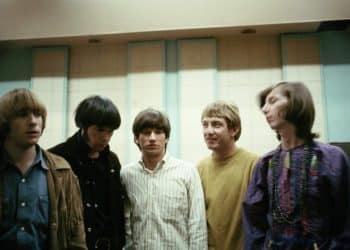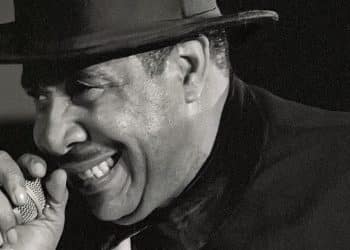Few bands have ever blended rock, folk, and progressive music as masterfully as Jethro Tull. Led by the unmistakable voice and flute wizardry of Ian Anderson, the band carved out a sound that defied genres, delivering some of the most unique and enduring songs in rock history. From electrifying riffs and poetic storytelling to intricate melodies and sweeping instrumental passages, Jethro Tull’s music has captivated audiences for over five decades.
With a catalog spanning from the late 1960s to the present, their songs have explored everything from medieval folklore to biting social commentary. Whether it’s the haunting acoustics of Aqualung, the breakneck energy of Locomotive Breath, or the sprawling ambition of Thick as a Brick, Jethro Tull’s music continues to inspire generations of fans. But which of their tracks stand out as the most beloved?
In this article, we dive into the top 10 most popular Jethro Tull songs of all time, celebrating the masterpieces that defined their legacy. Each of these tracks is a testament to the band’s innovation, musicianship, and timeless appeal. So grab your flute (or air guitar) and let’s embark on a journey through the very best of Jethro Tull!
1. Aqualung (1971)
Aqualung is arguably one of Jethro Tull’s most defining songs, setting the tone for their landmark 1971 album of the same name. The song paints a haunting portrait of a homeless man, Aqualung, capturing his struggles through raw, observational lyrics that walk a fine line between empathy and harsh realism. Ian Anderson’s distinctive, raspy vocals bring the character to life, while Martin Barre’s scorching guitar work creates a powerful contrast between delicate acoustic passages and hard-hitting rock riffs. The song’s shifting tempos and dynamic progressions elevate it beyond a typical rock track—it’s a storytelling masterpiece that seamlessly blends folk, blues, and progressive rock. With its unforgettable energy and deep social commentary, Aqualung remains one of the greatest rock songs of all time.
2. Locomotive Breath (1971)
Kicking off with a tense, bluesy piano intro, Locomotive Breath builds into an explosive, hard-driving anthem that critiques the relentless pace of modern life. The song’s central metaphor of an unstoppable train represents a man losing control, hurtling toward an inevitable fate. Featuring one of Anderson’s most iconic flute solos, the track perfectly blends classic blues-rock energy with Jethro Tull’s signature progressive style. As the song progresses, the tension builds to a powerful climax, driven by Barre’s electrifying guitar work and Clive Bunker’s pounding drums. A fan favorite and one of the standout tracks from Aqualung, Locomotive Breath remains a high-energy classic, resonating with anyone who’s ever felt overwhelmed by life’s relentless pressures.
3. Bourée (1969)
Jethro Tull’s take on Johann Sebastian Bach’s Bourrée in E minor is nothing short of brilliant, turning a Baroque masterpiece into a playful, jazz-infused instrumental. Anderson’s mesmerizing flute work takes center stage, delivering both precision and improvisation in equal measure. The song’s bass-heavy groove and swinging rhythm give it a fresh, modern twist, blending classical, jazz, and folk elements seamlessly. A standout track from Stand Up, Bourée showcases the band’s ability to reimagine classical music with a rock sensibility. Over the years, it has become one of their most beloved pieces, demonstrating the group’s versatility and Anderson’s extraordinary skill as a flutist.
4. Thick as a Brick (Part 1 & 2) (1972)
More than just a song, Thick as a Brick is an ambitious, genre-defying musical journey spanning over 40 minutes. Presented as a satirical concept album, the track is built around a fictional poem supposedly written by an eight-year-old boy, serving as a playful jab at the pretentiousness of progressive rock. Musically, it’s an intricate tapestry of folk, rock, and classical influences, shifting through complex time signatures and elaborate instrumental passages. Anderson’s lyrics weave a surreal, thought-provoking narrative, while the band delivers some of their most dynamic and technically impressive performances. Whether appreciated for its humor, musicianship, or sheer audacity, Thick as a Brick remains one of Jethro Tull’s most celebrated and influential works.
5. Living in the Past (1969)
With its distinctive 5/4 time signature, Living in the Past is one of Jethro Tull’s most instantly recognizable songs. The track’s offbeat rhythm, combined with Anderson’s flute melodies and a punchy bassline, creates an infectious, almost hypnotic groove. Lyrically, the song expresses a nostalgic yearning for a simpler time, a sentiment that resonated with audiences and helped propel it into the charts. Its unique jazz-rock fusion set it apart from mainstream rock at the time, showcasing the band’s willingness to experiment. Living in the Past not only became one of their biggest hits but also a defining piece of their early sound, cementing Jethro Tull’s place in rock history.
6. Too Old to Rock ‘n’ Roll: Too Young to Die! (1976)
This theatrical, larger-than-life anthem tells the story of an aging rock star struggling to stay relevant in a rapidly changing music industry. With sweeping instrumentation, dramatic vocal delivery, and a soaring chorus, the song reflects on the fleeting nature of fame and the inevitable passage of time. Many fans saw it as a personal statement from Anderson, though it was originally conceived as part of a rock musical. Whether taken literally or as a broader commentary on generational shifts in music, Too Old to Rock ‘n’ Roll: Too Young to Die! struck a chord with listeners who felt out of place in an evolving musical landscape. Over the years, it has become an enduring classic, especially among die-hard rock fans.
7. Songs from the Wood (1977)
With its rich harmonies, layered acoustic instrumentation, and medieval-inspired melodies, Songs from the Wood is a joyous celebration of nature and folklore. Marking the band’s deeper exploration of progressive folk rock, the song is a masterclass in musical storytelling. Anderson’s evocative lyrics transport listeners to an idyllic, rustic world filled with ancient traditions and mystical imagery. The track’s complex yet organic arrangements, featuring flutes, mandolins, and multi-layered vocals, create an immersive experience that feels both timeless and celebratory. A standout from the album of the same name, Songs from the Wood highlights Jethro Tull’s ability to blend rock with traditional folk influences in a way that few bands have ever matched.
8. Skating Away on the Thin Ice of the New Day (1974)
One of Jethro Tull’s most beautifully crafted songs, Skating Away on the Thin Ice of the New Day is an acoustic-driven meditation on change, uncertainty, and embracing the unknown. The track begins softly, with Anderson’s delicate vocals and gentle guitar work, before gradually building into a vibrant, rhythmic crescendo. Lyrically, it’s poetic and introspective, capturing a sense of transition and self-discovery. The song’s dynamic structure and elegant instrumentation make it a standout on War Child, offering a moment of reflection amid the album’s more bombastic tracks. Over time, it has become one of the band’s most cherished compositions.
9. Cross-Eyed Mary (1971)
A dark, theatrical companion piece to Aqualung, Cross-Eyed Mary tells the story of a young girl struggling to survive in a cruel world. The song’s haunting flute introduction quickly gives way to a thunderous, bluesy riff, showcasing the band’s ability to blend folk elements with hard rock intensity. Anderson’s sharp, biting lyrics paint a vivid picture of Mary’s life, while Barre’s guitar work adds an edge of raw power. As one of the more hard-hitting tracks on Aqualung, Cross-Eyed Mary has remained a fan favorite, frequently covered and referenced by other artists in the rock and metal world.
10. My God (1971)
Few songs in Jethro Tull’s catalog are as provocative as My God, a scathing critique of organized religion and hypocrisy. Opening with a somber acoustic melody, the track gradually builds into a powerful, electrified crescendo, complete with one of Anderson’s most intense flute solos. The lyrics pull no punches, challenging institutionalized faith and questioning the way religion is used to manipulate people. The combination of its haunting composition and bold social commentary made My God one of the most controversial and thought-provoking tracks on Aqualung. Even today, it stands as one of Jethro Tull’s most striking and fearless musical statements.









